Bipan Chandra Summary: Decline of the Mughal Empire | History for UPSC CSE PDF Download
The Decline of the Mughal Empire
Introduction
- The Mughal Empire, once formidable and admired, experienced a gradual decline in the first half of the 18th century.
- By 1803, the empire had dwindled to a small territory around Delhi, ultimately falling under British occupation.
Understanding the reasons behind this decline sheds light on the weaknesses of India's medieval social, economic, and political structures.
Early Stability and Aurangzeb's Reign
- Under Aurangzeb's strong and lengthy rule, the empire experienced stability despite underlying issues.
- Despite controversial policies, the Mughal administration remained efficient, and the military strength was formidable until Aurangzeb died in 1707.
- Respect for the Mughal dynasty persisted throughout the realm.
Bahadur Shah's Rule
- Bahadur Shah, emerging victorious after his father's death, pursued a policy of compromise and conciliation.
- His reign saw a departure from some of Aurangzeb's rigid policies, including a more tolerant approach towards Hindu chiefs and temples.
- Initial attempts to assert control over Rajput states like Amber and Marwar faced resistance, leading to eventual settlements but not without repercussions.
- While the states were restored to their rulers, demands for certain privileges and offices were not conceded.
Policy Towards Maratha Sardars
- Bahadur Shah's approach towards Maratha chiefs was characterized by half-hearted conciliation.
- Efforts to reconcile with the Marathas were met with limited success, indicating a lack of decisiveness in dealing with this powerful faction.
Overall, Bahadur Shah's reign marked a period of attempted reconciliation and compromise, but the underlying structural weaknesses of the empire persisted, contributing to its eventual downfall.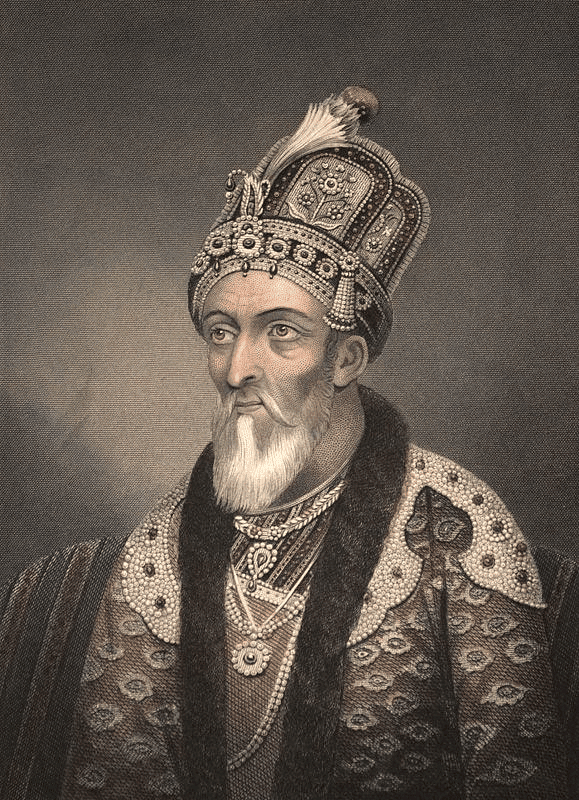 Bahadur Shah Zafar
Bahadur Shah Zafar
Further Developments in the Decline of the Mughal Empire
Maratha Relations
- Bahadur Shah's attempts to appease the Marathas fell short as he didn't fully satisfy their demands, notably failing to grant them the chauth.
- His refusal to recognize Shahu as the rightful Maratha king led to internal conflict within the Maratha kingdom, perpetuating disorder in the Deccan region.
- The dissatisfaction among Maratha sardars continued, hindering efforts to restore peace and order under Mughal authority.
Handling of the Sikh Rebellion
- Efforts to pacify the Sikhs initially included making peace with Guru Gobind Singh and granting him a high rank.
- However, after Guru Gobind Singh's death, the Sikh rebellion under Banda Bahadur prompted Bahadur Shah to take direct action.
- Despite initial successes in capturing Sikh strongholds, the rebellion persisted, and key territories were regained by the Sikhs.
Relations with Regional Chiefs
- Bahadur Shah sought to conciliate regional chiefs like Chhatarsal of Bundelkhand and Churaman Jat, securing their loyalty.
- However, his reckless granting of jagirs and promotions worsened the state finances, depleting the royal treasury.
- Despite his efforts to address the empire's challenges, Bahadur Shah's premature death in 1712 plunged the empire into further turmoil.
Shift in Political Dynamics
- Following Bahadur Shah's death, the succession wars saw a shift in power dynamics, with ambitious nobles directly contending for authority.
- Jahandar Shah, a weak and ineffectual ruler, relied heavily on powerful nobles like Zulfiqar Khan to govern.
- Zulfiqar Khan, recognizing the need for conciliation, reversed Aurangzeb's policies, establishing friendly relations with Rajput rajas and Maratha sardars.
- He abolished the jizyah tax and made significant concessions to regional chiefs, aiming to strengthen his position and stabilize the empire.
These developments illustrate the complex interplay of factors contributing to the continued decline of the Mughal Empire, including internal strife, financial mismanagement, and shifts in political alliances.
Further Political Turmoil and the Saiyid Brothers' Influence
Zulfiqar Khan's Reforms and Opposition
- Zulfiqar Khan attempted to stabilize the empire's finances by curbing the excessive granting of jagirs and enforcing nobles to maintain their troop quotas.
- However, his introduction of revenue farming led to increased oppression of peasants, exacerbating existing social issues.
- Despite his efforts, Zulfiqar Khan faced opposition from jealous nobles and lacked full trust and cooperation from the emperor, who was influenced by malicious rumours about the wazir's ambitions.
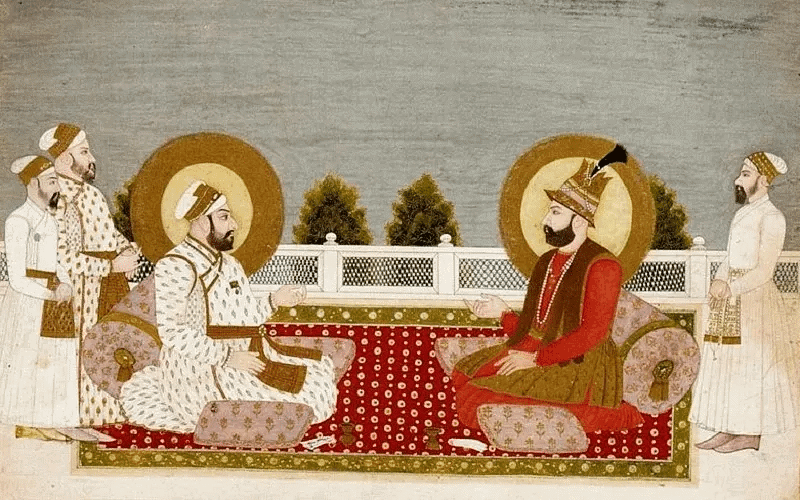 Saiyid brothers
Saiyid brothers
End of Jahandar Shah's Reign
- Jahandar Shah's incompetent rule ended in defeat at Agra in January 1713, paving the way for Farrukh Siyar's ascension to power.
- Farrukh Siyar's victory was owed to the Saiyid brothers, Abdullah Khan and Husain Ali Khan Baraha, who were rewarded with key positions in the administration.
- However, Farrukh Siyar's reign was marked by his own weaknesses—he was cowardly, cruel, and easily swayed by worthless favourites.
Power Struggle with the Saiyid Brothers
- Despite his personal authority aspirations, Farrukh Siyar faced a power struggle with the Saiyid brothers, who believed in wielding real authority to stabilize the empire.
- This power struggle persisted throughout Farrukh Siyar's reign, with the Emperor repeatedly attempting to overthrow the Saiyid brothers but failing.
- In 1719, the Saiyid brothers deposed Farrukh Siyar and installed Muhammad Shah as the new emperor, whom they effectively controlled.
Saiyid Brothers' Dominance
- Following Farrukh Siyar's removal, the Saiyid brothers held significant administrative power in the empire, controlling successive puppet emperors until 1720.
- They restricted the personal liberty of these puppet emperors, consolidating their authority over the state.
- This period witnessed a consolidation of power among the Saiyid brothers, albeit with significant repercussions for the stability and autonomy of the Mughal Empire.
These events demonstrate the continued turmoil within the Mughal Empire and the shifting dynamics of power between the ruling elite, nobles, and influential figures like the Saiyid brothers.
Policy of the Saiyid Brothers and Their Downfall
Religious Tolerance and Governance
- The Saiyid brothers advocated religious tolerance, believing that harmonious rule in India necessitated cooperation between Hindu and Muslim nobles.
- They aimed to incorporate Hindu chiefs and nobles into the administration, seeking to conciliate Rajputs, Marathas, and Jats against rival factions.
Immediate measures included abolishing the jizyah tax and pilgrim tax and garnering support from influential Hindu rulers like Ajit Singh of Marwar and Jai Singh of Amber.
Alliance Building and Diplomacy
- The Saiyid brothers formed alliances with key figures like Churaman, the Jat chieftain, and King Shahu of the Marathas, granting him significant concessions in exchange for military support.
- Efforts were made to contain rebellions and stabilize the empire, but constant political rivalry and conspiracies hindered their effectiveness.
Challenges and Administrative Decay
- Despite conciliatory efforts, administrative disintegration persisted due to political friction and internal dissent.
- Financial strain worsened as revenue collection faltered, officials misappropriated funds, and revenue farming proliferated, leading to salary delays and indiscipline among soldiers.
Conspiracy and Opposition
- A powerful group of nobles, led by Nizam-ul-Mulk and Muhammad Amin Khan, conspired against the Saiyid brothers, resenting their growing influence.
- The deposition and murder of Farrukh Siyar heightened nobles' fears, leading to accusations of treachery against the Saiyid brothers.
- Opposition was fueled by disdain for the brothers' alliances with non-Muslim rulers and their liberal policies, perceived as anti-Mughal and anti-Islamic.
The downfall of the Saiyid Brothers
- In 1720, the assassination of Husain Ali Khan and the defeat of Abdullah Khan near Agra marked the end of the Saiyid brothers' dominance in Mughal politics.
- Their downfall highlighted the fragility of their power base and the shifting alliances and loyalties within the Mughal court.
- They were remembered in history as "kingmakers" for their pivotal role in shaping the empire's leadership during this tumultuous period.
The rise and fall of the Saiyid brothers encapsulate the challenges of governance in a diverse and fractious empire, highlighting the complexities of religious, political, and administrative dynamics in Mughal India.
Muhammad Shah's Reign and the Beginning of Decline
Conditions at the Start of Muhammad Shah's Reign
- Muhammad Shah's reign (1719-1748) represented a critical juncture for the Mughal Empire, with Mughal prestige still holding sway and the army retaining some strength.
- Administration in northern India had deteriorated but not yet completely collapsed, and key regional powers like the Marathas and Rajputs maintained loyalty to the Mughal dynasty.
- However, Muhammad Shah's weak-minded and frivolous nature, coupled with his neglect of state affairs, posed significant challenges to the empire's stability.
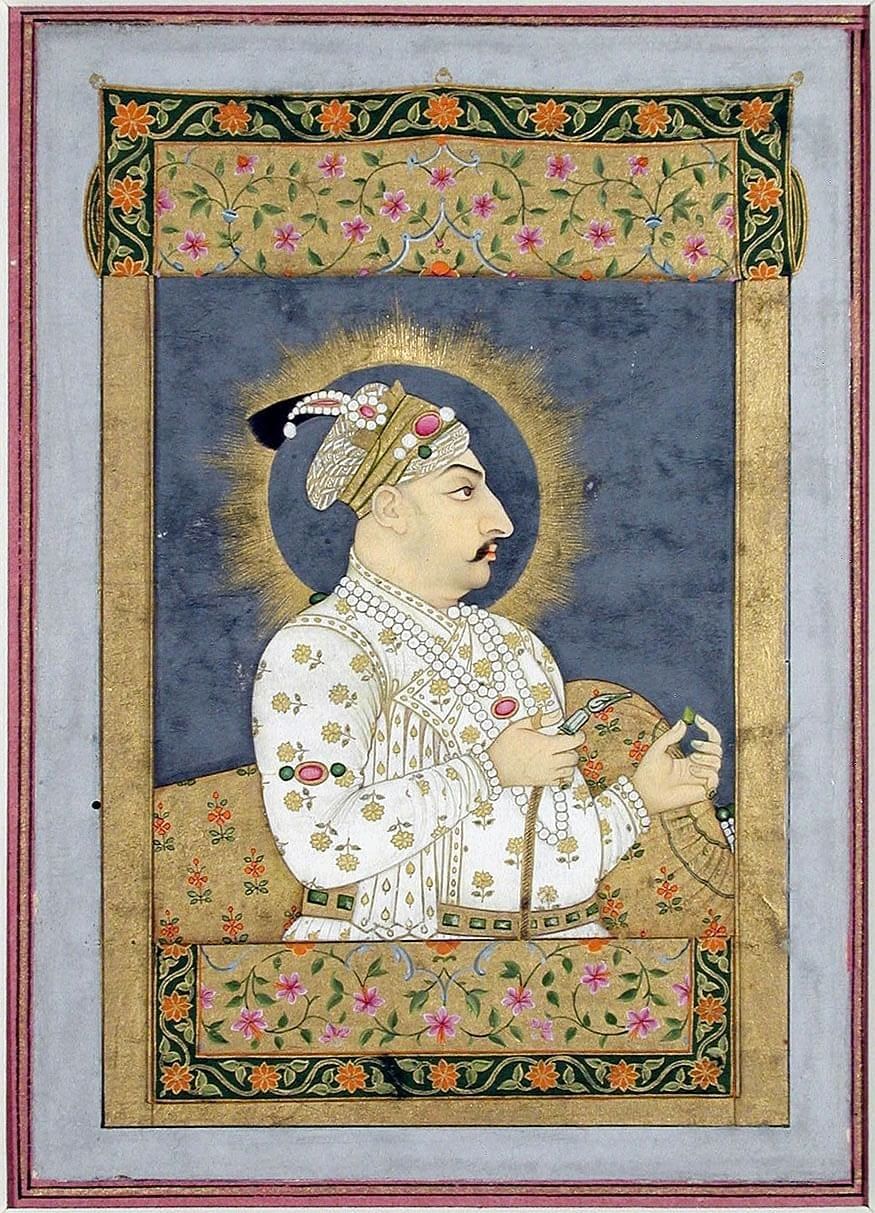 Muhammad Shah
Muhammad Shah
Role of Nizam-ul-Mulk
- Nizam-ul-Mulk, initially appointed as wazir in 1722, attempted to reform the administration but became disillusioned with Muhammad Shah's leadership and decided to pursue his own ambitions.
- His departure symbolized a loss of loyalty and virtue within the empire, marking the beginning of its physical breakup.
Rise of Semi-Independent States
- With the departure of influential figures like Nizam-ul-Mulk, ambitious nobles began to carve out semi-independent states, leading to the rise of hereditary nawabs in Bengal, Hyderabad, Avadh, and Punjab.
- Rebellions and independence movements proliferated, with local rulers and zamindars asserting their autonomy.
- The expansion of Maratha power into northern regions like Malwa, Gujarat, and Bundelkhand further destabilized the empire.
Nadir Shah's Invasion
- In 1738-1739, Nadir Shah's invasion dealt a severe blow to the already weakened Mughal Empire.
- Nadir Shah's rise to power in Persia had been marked by his successful campaigns against internal rebellions and foreign threats, including Russian and Turkish incursions.
His conquests in Persia and subsequent consolidation of power positioned him as a major regional player, leading to his invasion of northern India.
Nadir Shah's Rise to Power
- Nadir Shah's rise from a shepherd boy to the Shah of Persia was characterized by his military prowess and strategic brilliance.
- Amidst internal unrest and external threats to Persia, Nadir Shah emerged as a key figure, defeating rebellious tribes and repelling invasions from Russia and Turkey.
- His successful campaigns and diplomatic maneuvers culminated in his ascension to Shah's throne and the reconquest of lost territories.
Nadir Shah's invasion of northern India marked a turning point in the decline of the Mughal Empire, exacerbating existing internal weaknesses and further fracturing the once-mighty empire.
Nadir Shah's Invasion and Its Aftermath
Motivations and Preparation for Invasion
- Nadir Shah was lured to India by its legendary wealth, as Persia faced financial difficulties due to continual military campaigns.
- The weakened state of the Mughal Empire, coupled with neglected defenses along the northwest frontier, made India vulnerable to invasion.
- Nadir Shah entered Indian territory in 1738, encountering minimal resistance as the Mughal defences were ill-prepared.
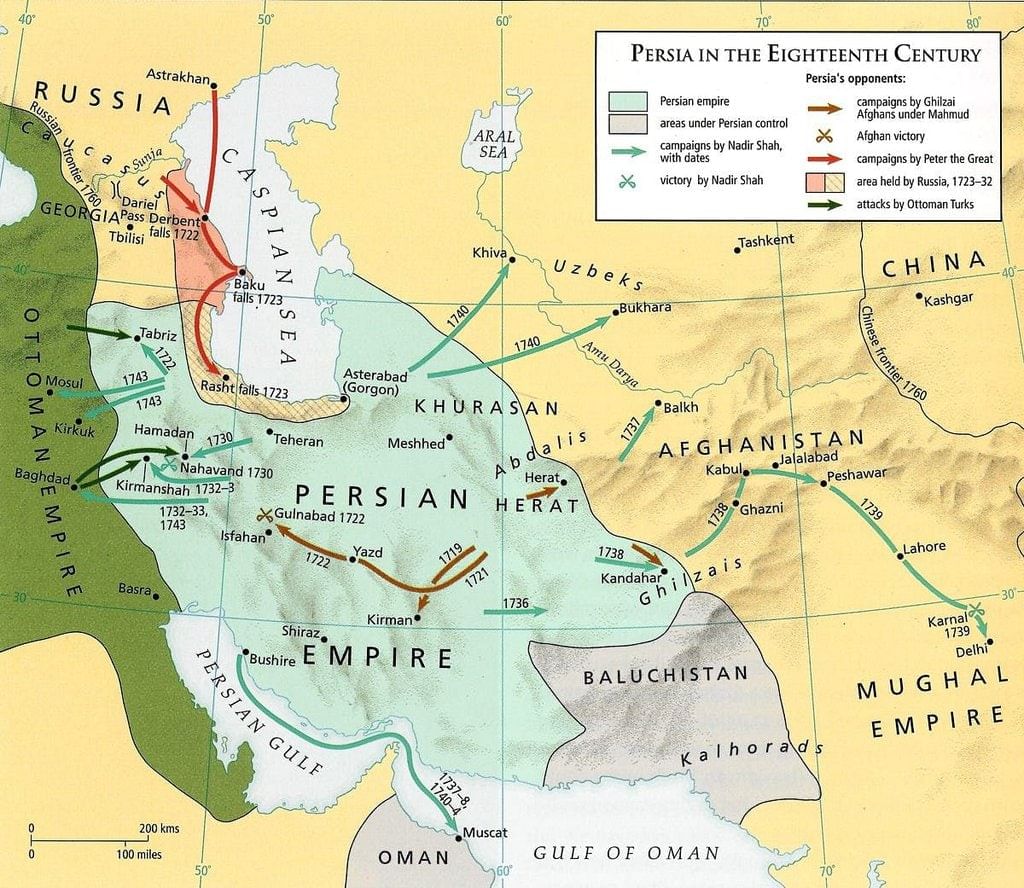 Nader Shah's empire
Nader Shah's empire
Battle of Karnal and Consequences
- The Battle of Karnal in February 1739 resulted in a decisive victory for Nadir Shah, with the Mughal Emperor Muhammad Shah taken prisoner.
- Nadir Shah proceeded to Delhi, where a brutal massacre of citizens occurred as reprisal for the killing of his soldiers.
- The invaders looted the royal treasury, levied tribute on nobles, and plundered the wealthy of Delhi, amassing an estimated 70 crores of rupees in loot.
- Muhammad Shah was compelled to cede all provinces west of the Indus River to Nadir Shah.
Impact on the Mughal Empire
- Nadir Shah's invasion dealt a severe blow to Mughal prestige, exposing the empire's weaknesses to Maratha chiefs and foreign trading companies.
- The central administration was temporarily paralyzed, and imperial finances were ruined, leading to increased oppression of the peasantry by impoverished nobles.
- The loss of territories, particularly Kabul and regions west of the Indus, left the empire vulnerable to further invasions from the northwest.
Subsequent Events and Further Decline
- After Nadir Shah's departure, the Mughal Empire witnessed bitter struggles among power-hungry nobles, leading to civil unrest and internal conflicts.
- The weakening of northwestern defences allowed Ahmed Shah Abdali, Nadir Shah's general, to repeatedly invade and plunder northern India between 1748 and 1767.
- Abdali's victory over the Marathas in the Third Battle of Panipat in 1761 dealt a significant blow to their ambitions of dominating the Mughal Emperor and the region.
- Despite his military successes, Abdali and his successors failed to establish a lasting Afghan kingdom in India, eventually losing control over territories like Punjab to Sikh chiefs.
Nadir Shah's invasion marked a turning point in the decline of the Mughal Empire, accelerating its fragmentation and exposing its vulnerabilities to external threats.
The Mughal Empire gradually disintegrated due to a combination of internal and external factors:
Disintegration of the Mughal Empire
Transition to the Kingdom of Delhi
- By 1761, the Mughal Empire ceased to function as an all-India Empire and was reduced to the Kingdom of Delhi.
- Delhi became a scene of constant chaos and unrest, with the descendants of the Mughals no longer actively participating in political struggles.
- Despite losing military power, the Mughal dynasty retained a nominal throne in Delhi, providing a symbolic unity for the country.
Reign of Shah Alam II
- Shah Alam II, who ascended the throne in 1759, faced internal threats and lived in fear of his own wazir.
- In 1764, he joined Mir Qasim of Bengal and Shuja-ud-Daula of Avadh in a failed war against the British East India Company, leading to his subsequent pensioner status under the Company.
- He sought refuge with the Marathas after leaving British protection in 1772, marking a period of political manoeuvring.
- The British occupied Delhi in 1803, and from then until 1857, the Mughal Emperors were merely figureheads for British rule.
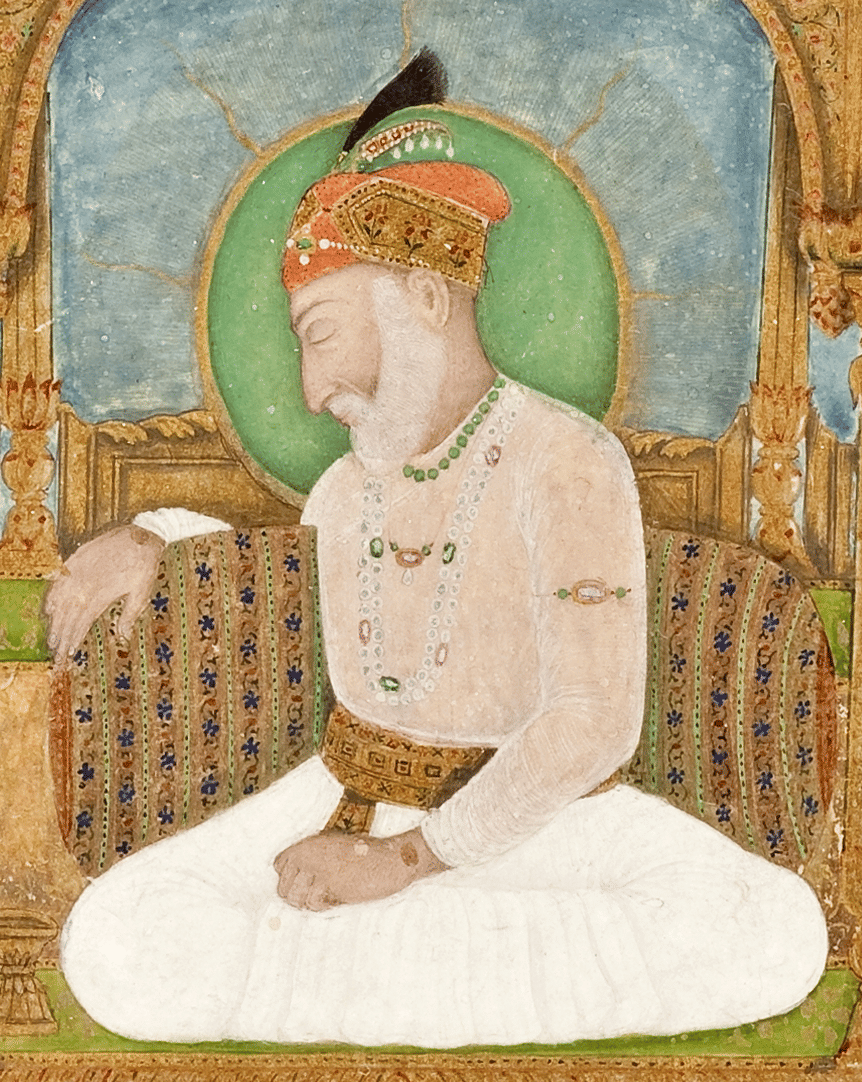 Shah Alam II
Shah Alam II
Causes of Decline
- Aurangzeb's policies of expansion strained resources and governance, especially his prolonged campaign against the Marathas.
- Failure to accommodate regional autonomy demands, particularly from the Marathas, led to prolonged conflicts and drained imperial resources.
- Administrative neglect during Aurangzeb's absence from the north for over 25 years weakened central authority, allowing provincial officials to challenge imperial control.
- Maratha expansion in the north further weakened the central authority and contributed to the Empire's decline.
The decline of the Mughal Empire was a complex process influenced by internal policies, external pressures, and shifting power dynamics within the Indian subcontinent.
Impact of Aurangzeb's Policies
Conflict with the Rajput States
- Aurangzeb's attempt to reduce the strength of Rajput rulers and extend imperial control over their lands led to the withdrawal of Rajput loyalty from the Mughal throne.
- Wars with Rajput states weakened the Empire and fostered separation, creating a divide between the Hindu and Muslim upper classes.
Uprisings around Delhi
- Uprisings by groups like the Satnami, Jats, and Sikhs challenged Aurangzeb's administration, particularly around Delhi.
- These uprisings, though not large in scale, were significant as they were popular among peasants, reflecting deep dissatisfaction with Mughal oppression.
Religious Orthodoxy
- Aurangzeb's religious orthodoxy and policies towards Hindu rulers damaged the stability of the Empire.
- Unlike previous rulers, Aurangzeb imposed the jizyah, destroyed Hindu temples, and imposed restrictions on Hindus, widening the gap between Hindu and Muslim elites.
- However, the impact of Aurangzeb's religious policies on the decline of the Empire should not be overstated, as his successors abandoned these policies.
- Later Mughals restored amicable relations with Hindu nobles and chiefs, developing political alliances rather than religious divisions.
Complexity of Religious and Political Alliances
- In the 18th century, Hindu and Muslim chieftains prioritized power and plunder over religious solidarity.
- The ruling classes, regardless of religion, often oppressed and exploited the common people.
- Both Hindu and Muslim nobles formed alliances against fellow coreligionists for political gains.
- Despite occasional religious tensions, cordial cultural and social relations existed between the Hindu and Muslim upper classes.
Aurangzeb's policies and the ensuing social and political dynamics played a significant role in the decline of the Mughal Empire, contributing to internal divisions and weakening imperial control.
[Intext Question]
Impact of Wars of Succession
Civil Wars
- Wars of succession, exacerbated by the absence of a fixed rule of succession, plagued the Mughal dynasty after Aurangzeb's death.
- These wars became increasingly fierce and destructive during the 18th century, resulting in significant loss of life and property.
- Thousands of trained soldiers and capable military commanders were killed, weakening the Empire's military strength.
Administrative Disarray
- The administrative fabric of the Empire was loosened as the nobility, essential for its functioning, was divided into warring factions.
- Local chiefs and officials took advantage of the political chaos to consolidate their own power, acquire greater autonomy, and make their offices hereditary.
Impact of Weak Rulers and Declining Nobility
Weak and Luxury-Loving Kings
- Following Bahadur Shah's brief reign, a succession of weak-willed and luxury-loving kings further weakened the Empire.
- In an autocratic system, the ruler's character and personality play a crucial role, and the lack of capable rulers exacerbated the Empire's decline.
- Aurangzeb's downfall was not due to personal weakness but rather to flawed policies.
 Aurangzeb Empire
Aurangzeb EmpireDeterioration of Nobility
- The strength of the Mughal Empire relied on the organisation and character of its nobility.
- Many nobles lived extravagantly beyond their means, becoming fond of luxury and ease.
- While some nobles remained capable and efficient, many neglected their duties, education, and military training.
- Existing noble families monopolised offices, hindering the rise of fresh talent from the lower classes.
- Despite the presence of talented individuals, their focus on personal interests and internal conflicts rather than serving the state weakened the Empire.
The combination of weak rulers and a declining nobility contributed significantly to the deterioration of the Mughal Empire, leading to administrative disarray and internal strife.
Factors Contributing to the Decline of the Mughal Nobility
Selfishness and Lack of Devotion
- The primary weakness of the Mughal nobility in the 18th century stemmed from their selfishness and lack of dedication to the state.
- Nobles prioritized increasing their power, prestige, and income over the welfare of the Empire.
- They formed factions against each other and even against the king, resorting to force, fraud, and treachery to further their interests.
- Mutual quarrels among nobles exhausted the Empire, weakened its cohesion, and facilitated its dismemberment.
- Active and able nobles were particularly culpable, as they carved out private principalities, further fragmenting the Empire.
Causes of Selfishness
- The scarcity of jagirs and reduced income from existing jagirs intensified rivalry among nobles for control over these resources.
- The insufficient number of offices and jagirs led to intense competition among nobles, fostering selfish behaviour.
- Nobles sought to maximize income from jagirs at the expense of peasants, often transforming jagirs into hereditary positions.
- Appropriating crown lands (khalisah) to balance their budgets exacerbated the financial crisis of the central government.
- Nobles reduced military expenditure by not maintaining full troops, weakening the armed strength of the Empire.
Impact on Peasantry and Empire
Peasant Exploitation
- The Mughal Empire failed to meet the minimum needs of its population, particularly the peasant class.
- Peasant conditions worsened during the 17th and 18th centuries, with their lives characterized as "poor, nasty, miserable, and uncertain."
- Land revenue burdens increased over time, and constant transfers of nobles from jagirs led to oppressive practices.
- The practice of ijarah, farming land revenue to the highest bidder, led to the rise of revenue farmers and talukdars who exploited peasants relentlessly.
The decline of the Mughal nobility's public virtue, coupled with their selfish pursuits and exploitation of resources, significantly contributed to the overall decline and fragmentation of the Mughal Empire.
Impact of Socio-Political Factors on the Decline of the Mughal Empire
Peasant Discontent and Uprisings
- Stagnation and deterioration in agriculture, coupled with peasant impoverishment, led to increased discontent among the peasantry.
- Some peasants resorted to leaving the land to avoid paying taxes, exacerbating the agricultural crisis.
- Peasant discontent manifested in uprisings such as the Satnamies, the Jats, and the Sikhs, which weakened the stability and strength of the Empire.
Ruined peasants formed roving bands of robbers and adventurers, further undermining law and order and the efficiency of the Mughal administration.
Challenges in Agriculture and Economy
- Agriculture failed to produce sufficient surplus to meet the needs of the Empire, constant warfare, and the increasing luxury of the ruling classes.
- Trade and industry, while initially encouraged by the establishment of a large empire, suffered from stagnation.
- Bad communications and the self-sufficient nature of village economies hindered the growth of trade.
Emphasis on land as a source of wealth and government revenue led to neglect of overseas trade and the navy.
Absence of Political Nationalism
- India lacked the elements of modern nationalism, and people did not identify themselves as Indians with common interests.
- Cultural unity existed but did not translate into a sense of national identity or unity.
- Peasants' loyalty was to their village and caste rather than to the nation, and they had little interest in imperial politics.
Role of Zamindars
- Zamindars rebelled against central authority, particularly when it showed signs of weakness, as they opposed a strong, centralized state that curbed their power and autonomy.
These socio-political factors contributed significantly to the decline and fragmentation of the Mughal Empire, weakening its stability and making it vulnerable to external pressures and internal strife.
Factors Contributing to the Decline of the Mughal Empire
Nobles' Loss of Loyalty and Fragmentation of Power
- With the decline of the Mughal dynasty, nobles prioritized their self-interest and ambition over loyalty to the state.
- Nobles carved out autonomous principalities, undermining the unity of the Empire.
- Even rebellious factions like the Marathas, Jats, and Rajputs aimed at consolidating regional or personal power rather than fighting for a unified India.
The socio-economic and political landscape was not conducive to the emergence of a unified Indian society or nation.
Administrative Breakdown
- The rapid decline in administrative efficiency during the 18th century.
- Neglect of administration and breakdown of law and order in many regions.
- Unruly zamindars openly defied central authority.
- Corruption, bribery, indiscipline, inefficiency, disobedience, and disloyalty prevailed among officials at all levels.
- The Central Government faced bankruptcy due to narrowed income sources and failure to collect provincial revenues.
Military Weakness
- Mughal army lacked discipline and fighting morale in the 18th century.
- Lack of finance made it difficult to maintain a large army, resulting in delayed payment of soldiers and officers.
- Constant disaffection among mercenaries and the risk of mutiny.
- Nobles-cum-commanders failed to maintain their full military contingents due to financial troubles.
- Civil wars led to the loss of experienced commanders and soldiers, weakening the army's ability to defend the Empire.
These factors collectively contributed to the decline and eventual downfall of the once-great Mughal Empire, leaving it vulnerable to external aggression and internal strife.
[Intext Question]
Foreign Invasions and British Challenge: Final Blow to the Mughal Empire
Impact of Nadir Shah and Ahmad Shah Abdali
- Foreign invasions by Nadir Shah and Ahmad Shah Abdali drained the Empire of its wealth and military power.
- These invasions were consequences of the Empire's internal weakness, exacerbating its decline.
- Ruined trade and industry in the North further weakened the Empire's economic base.
Emergence of the British Challenge
- The emergence of the British challenge dealt the final blow to the crisis-ridden Empire.
- None of the Indian powers rose to claim the heritage of the Mughals, lacking the strength to unite the fragmented Empire or create a new socio-economic order.
- Indian powers suffered from the same weaknesses that led to the decline of the Mughal Empire.
European Superiority
- European societies, including the British, had evolved superior economic systems and were more advanced in science and technology.
- The British, with their economic and technological superiority, were able to dissolve the existing socio-economic and political structure of India and replace it with a colonial structure.
Consequences of Colonial Rule
- Colonial rule brought extreme misery, national degradation, and economic, political, and cultural backwardness to India.
- However, colonial contact also brought about new forces of change, breaking the stagnation of Indian society.
The decline and eventual dissolution of the Mughal Empire paved the way for British colonial rule in India, which had far-reaching consequences for Indian society, leading to both suffering and eventual transformation.
|
216 videos|855 docs|219 tests
|
FAQs on Bipan Chandra Summary: Decline of the Mughal Empire - History for UPSC CSE
| 1. What were some of the key factors that led to the decline of the Mughal Empire? |  |
| 2. Who were the Saiyid Brothers and what was their role in the decline of the Mughal Empire? |  |
| 3. How did Muhammad Shah's reign contribute to the decline of the Mughal Empire? |  |
| 4. What was the impact of Nadir Shah's invasion on the Mughal Empire? |  |
| 5. How did the policies of Aurangzeb impact the decline of the Mughal Empire? |  |






















